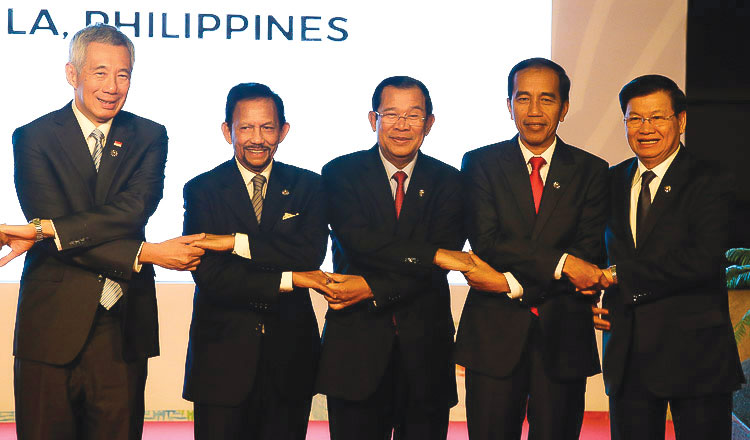The Indo-Pacific initiative appears to have hit a roadblock with Singapore showing reluctance to endorse it.
For the latest Cambodian Business news, visit Khmer Times Business
Singapore says it needs a little more time for discussion.
The document which details how Asean nations view cooperation among countries in the region, is based on openness and respect for international law.
The Asean Outlook defines the Asia Pacific and Indian Ocean regions as a single interconnected region, the Indo-Pacific.
The Asean outlook is an attempt to convince that the region is strategically relevant to both China and the US, thus the need to spare the region from taking sides.
The outlook was already endorsed in the month of June where the report touched on favoured Asean themes including concerns about maritime cooperation, peace stability, and prosperity.
Singapore’s concern is one of choosing between China and the US while the document is one that affects its centrality in broader regionalism and that it needs to collectively show that it is united.
The term Indo-Pacific – referring to the region between India and the Pacific Coast of the US – has been used in recent years by both Japanese and US officials trying to boost economic and security ties with countries in the region amid China’s expanding influence.
The Indo-Pacific document would attempt to free the US and China, and through its strategy of mutual security and economic gain does not necessarily mean it falls into either the US or Chinese framework.
It is likely that China and the US would see the region through their own lens, and it is likely that it is not going to solve the problem that it is supposed to have been solved. (Therefore, greater power blocs see much enthusiasm in Indonesia’s role).
Then, there is the issue as to how the document would be used to entice the other countries in the region, notably the US, China, Russia, India and Australia, and if Asean will take bilateral or multilateral routes at that meeting.
Talk between Asean and its East Asian partners would see the presence of Russia and China dilute Asean’s stance in the region, which will give them a greater say in the affairs of the region.
China is certainly locked in a contest with the US which is attempting to reduce its Belt and Road Initiative by locking the two oceans together with Asean in the centre.
While the document aims to keep centrality intact, Asean also needs to hear the US vision which would allow Asean to continually depend on the US for its security needs while being able to continually depend on China for its economic interests.
This is crucial for Asean member countries which have seen China’s obtrusive influence, particularly in the South China Sea by building artificial islands and stationing naval and air assets. This aside from the fact that many Asean countries have overlapping claims in the South China Sea.
The crucial element of the document would be to ensure that Asean steers a middle path between China and the US and still ensure that its centrality is intact.
Asean leaders also have a commitment to conclude negotiations of the China- initiated Regional Comprehensive Economic Partnership or RCEP within the year as it would help Asean manage change and uncertainty in the region.
It is hoped that much work that remains would invariably be resolved within this year. RCEP would cover half the population and 30 percent of the global trade by value.
Sathish is a commentator on regional issues. He is based in Malaysia




